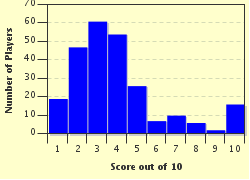Quiz Answer Key and Fun Facts
1. If one were to analyze all of the the economic difficulties that the Reich faced during the initial period of rapid rearmament (between 1933 and 1939) what would the most prominent of these difficulties be?
2. Of the following, which had the smallest impact on the overall reduction of unemployment numbers during Hitler's "economic miracle"?
3. IG-Farben, at the time one of the largest corporations in the world, was a conglomerate of many individual companies. Which of the following never fell under the purview of this conglomerate?
4. The major German aircraft manufacturers are well known names to students of the period. One thing that is not commonly known is the fact that one of these corporations was completely taken over by the state in October 1933. From this point forward the firm was managed by Heinrich Koppenberg (although the firm's products still carried the name of its founder).
5. A legacy of the Third Reich period that continues in production to this day is the Buna (synthetic rubber) facility at Monowitz (Monowice), located in modern day Poland. In 2006 it produced about 5% of the world's supply of this product. Which of the following statements about the facility is false.
6. In the field of Reich Economics, for what is Walther Funk primarily known?
7. Throughout the course of the Third Reich, *absolute* priorities for armaments production were constantly altered, largely at the whim of Adolf Hitler. What program enjoyed this distinction in 1939, prior to the invasion of Poland?
8. Among all the benefits brought about by the Austrian Anschluss in 1938, which was by far the most vital to Germany?
9. Hitler's decision to invade the USSR in 1941 is universally regarded as his biggest error, yet there were several very sound reasons his for pursuing this course at the time. The decision was based on a few factors, yet one stands high above all the others; what was it?
10. Although the "Grossraum" occupied by the Reich at its height of power contained a substantial percentage of the world's modern foundries and armaments factories these were never to be brought into any significant production. There were many reasons for this; what was by far the largest?
Source: Author
iron2
This quiz was reviewed by FunTrivia editor
bloomsby before going online.
Any errors found in FunTrivia content are routinely corrected through our feedback system.

